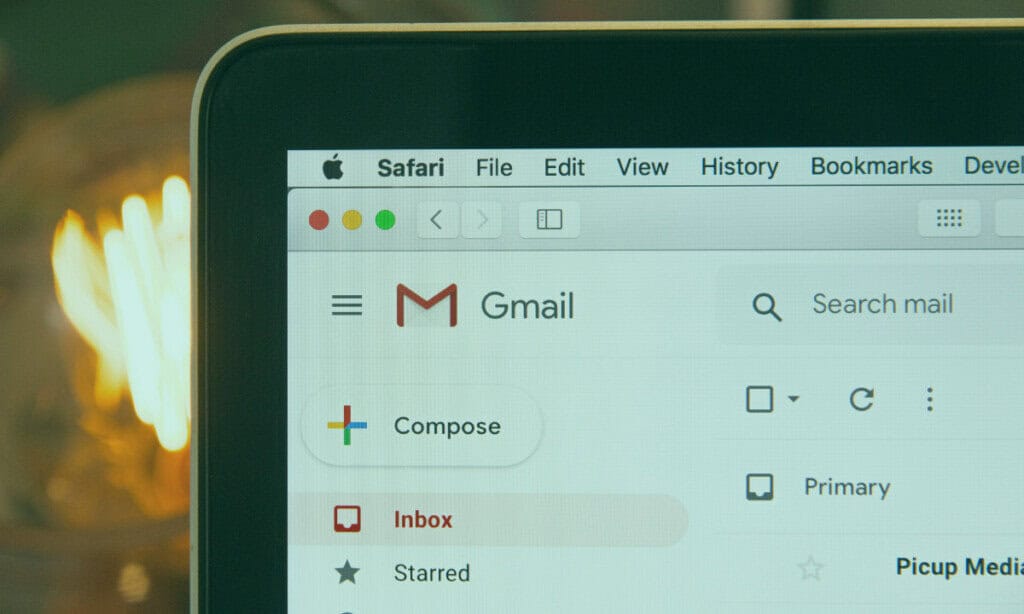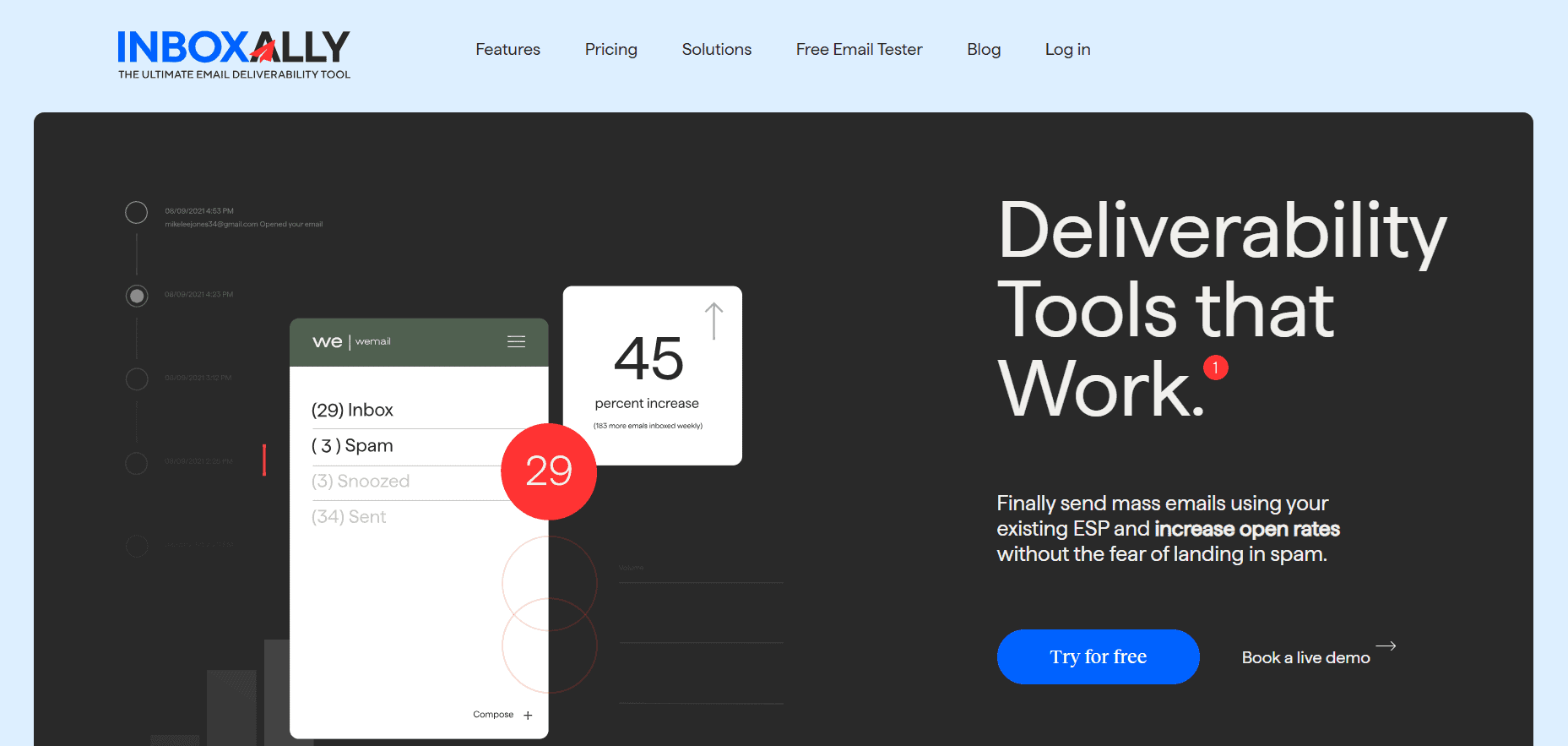Last Updated on April 8, 2025 by Ewen Finser
Emails keep bouncing back or winding up in the spam folder? That’s no way to engage with your subscribers!
Here are some best practices to improve your email deliverability rate and keep your subscribers interested and engaged
What Affects Email Deliverability? (Common Pitfalls to Avoid)
First off, what are you doing wrong?
Here are some of the most likely reasons your emails might not be getting through:
- Low engagement rates: Email providers like Gmail and Yahoo track engagement metrics like opens, clicks, and replies. If people aren’t interacting with your emails, future emails could get flagged.
- Spam triggers: Using words like “FREE” in all caps, going overboard on images, or writing clickbait subject lines can set off spam alarms.
- Bad sender reputation: Your IP and domain get a score, and if it drops too low, your emails aren’t going to get delivered.
- High bounce rates: Old, invalid, or fake email addresses hurt your credibility.
- Unverified email list: Not using double opt-in or list validation causes its own set of issues that lowers deliverability.
Missing authentication: Protocols like SPF, DKIM, and DMARC protect your emails. Without them, your emails could register as a risk to the recipient’s provider.
InboxAlly is the comprehensive suite I need to solve challenging deliverability problems across the board. It's like a triage hub for diagnosing and fixing email deliverability rates in one dashboard. I've tried a lot of tools, but this is the one I've stuck with.
Best Practices to Improve Email Deliverability Rate
So… what can you do about it? Here are a few proactive things that you can start doing right now to make sure your emails get where they need to in a timely manner.

Authenticate Your Emails Properly (SPF, DKIM, DMARC)
Authenticating your emails with SPF (Sender Policy Framework, DKIM (DomainKeys Identified Mail), and DMARC (Domain-based Message Authentication, Reporting, and Conformance) proves to email providers like Gmail and Outlook that your emails are legitimate and not spam or scams.
This step helps protect your brand from phishing attacks and builds trust with email services, making it more likely for your messages to make it to the inbox instead of the spam folder.
Most email platforms offer step-by-step guides to make setting these processes up fairly simple. For extra credibility, you can also add BIMI (Brand Indicators for Message Identification), which lets you put your brand logo next to your emails in some inboxes.
Maintain a Healthy Email List
When was the last time you checked your email list? Keeping it clean is a great way to boost deliverability and increase engagement.
Go through your list frequently to remove inactive subscribers (like anyone who hasn’t opened an email in 6+ months) to avoid sending to people who aren’t interested anymore.
Use email verification tools like NeverBounce or ZeroBounce to catch invalid or fake email addresses before they mess up your credibility as a sender.
Last but not least, always use double opt-in when you can since it helps you make sure that every subscriber is real, interested, and willing to engage to keep your email list healthy and spam-free.
Optimize Your Email Content
Next, make the emails themselves better. Start by removing any classic spam trigger words like “Act Now!” or “Winner,” which can raise red flags with inbox providers and are just bad practice overall.
Make sure your email design finds the sweet spot between text and image with around 60% text and 40% images to keep things readable and spam-safe. Subject lines should be short, clear, and under 50 characters to grab attention but not create a chore to read.
And don’t forget personalization! Using the subscriber’s name, location, or past behavior makes your emails feel more relevant and personalized while boosting your chances of getting opened.
Improve Engagement with Segmentation & Personalization
On the subject of optimizing email content, make it more personal. Segment your email list based on behavior, purchase history, or demographics so you can send people only what will matter to them.
Try dynamic content that changes based on the reader, like showing product recommendations based on past purchases.
Don’t forget the timing of your emails, too. Experiment with different send times and track what gets the best results and most interaction. The more tailored and personalized your emails are, the more likely they will get opened and clicked.
Keep a Regular Sending Schedule
Next up is to balance your schedule. This one is tricky, because every audience is different, and it’s easy to over or underdo it, which are equally as harmful to your deliverability rate.
You can easily test this out to see how your audience best responds to email frequency. Try one a week, then try increasing or decreasing frequency to find that sweet spot that makes your audience most responsive.
Consider practicing throttling your email sending to avoid the issues that arise from bulk sending.
Warm Up Your IP & Domain
Warming up your email domain helps inbox providers see that you’re a trustworthy sender.
Start off by sending small batches of emails (maybe 100-500 a day) and slowly increase the volume of how many you send over a few weeks.
Positive interactions help build your reputation, so focus your efforts on your most engaged subscribers first. This gradual approach signals to ISPs that you’re legit and not a spammer.
Improve Sender Reputation & Avoid Blacklists
You need credibility as a sender to make sure your emails get to where they’re going and to avoid being blacklisted.
Keep up with your rep by monitoring your sender scores on sites like Google Postmaster and SenderScore.org. Be aware of your status by checking blacklists like Spamhaus and Barracuda.
To improve your reputation, encourage replies to your emails since this boosts engagement signals and gives your sender reputation a boost.
Use a Custom Sending Domain
The sending domain, which appears in the “from” line in your subscribers’ inboxes, is another key factor in email deliverability.
This is why it’s important to use a custom sending domain separate from any other domains in your business. This allows you greater control, credibility, and consistency, while sharing an IP can cause things to get muddy and introduce extra issues.
Advanced Tactics for Maximum Deliverability

Tried all of this and still want to boost your email deliverability even further? Try one of these more advanced methods to ensure maximum deliverability.
- Use AI & Machine Learning- These tools can help you predict the best send times and optimize for higher open rates automatically.
- Set Up Feedback Loops (FBL)- Get notified when people mark your emails as spam (major providers like Gmail and Yahoo support this).
- Make Your Emails Interactive- Add polls, quizzes, and surveys. More clicks = better deliverability.
- A/B Test Everything- Try different subject lines, formats, and CTAs and let the data tell you what works.
How to Monitor & Troubleshoot Deliverability Issues
How do you know your efforts are working? Here are some easy ways to monitor your deliverability issues to strategize on how to fix them:
- Use tools like MailGenius, InboxAlly, and GlockApps to check deliverability health from your sender
- Track your bounce rates and spam complaints
- Watch Google Postmaster and Microsoft SNDS for problem signals
- Clean your sending list by re-engaging or removing any inactive subscribers
Key Takeaways
It takes some work to make sure your email campaigns stay out of the spam folder! Here are the main things you need to remember to do to improve the deliverability of your emails.
- Authenticate your emails properly
- Keep your lists clean, updated, and engaged
- Personalize your content with segmentation and unique offerings
- Monitor your reputation and check blacklist sites
- Test and tweak every part of your email strategy to keep improving
Follow these, and you’ll keep your readers engaged—and stay out of their spam folders!
InboxAlly is the comprehensive suite I need to solve challenging deliverability problems across the board. It's like a triage hub for diagnosing and fixing email deliverability rates in one dashboard. I've tried a lot of tools, but this is the one I've stuck with.


